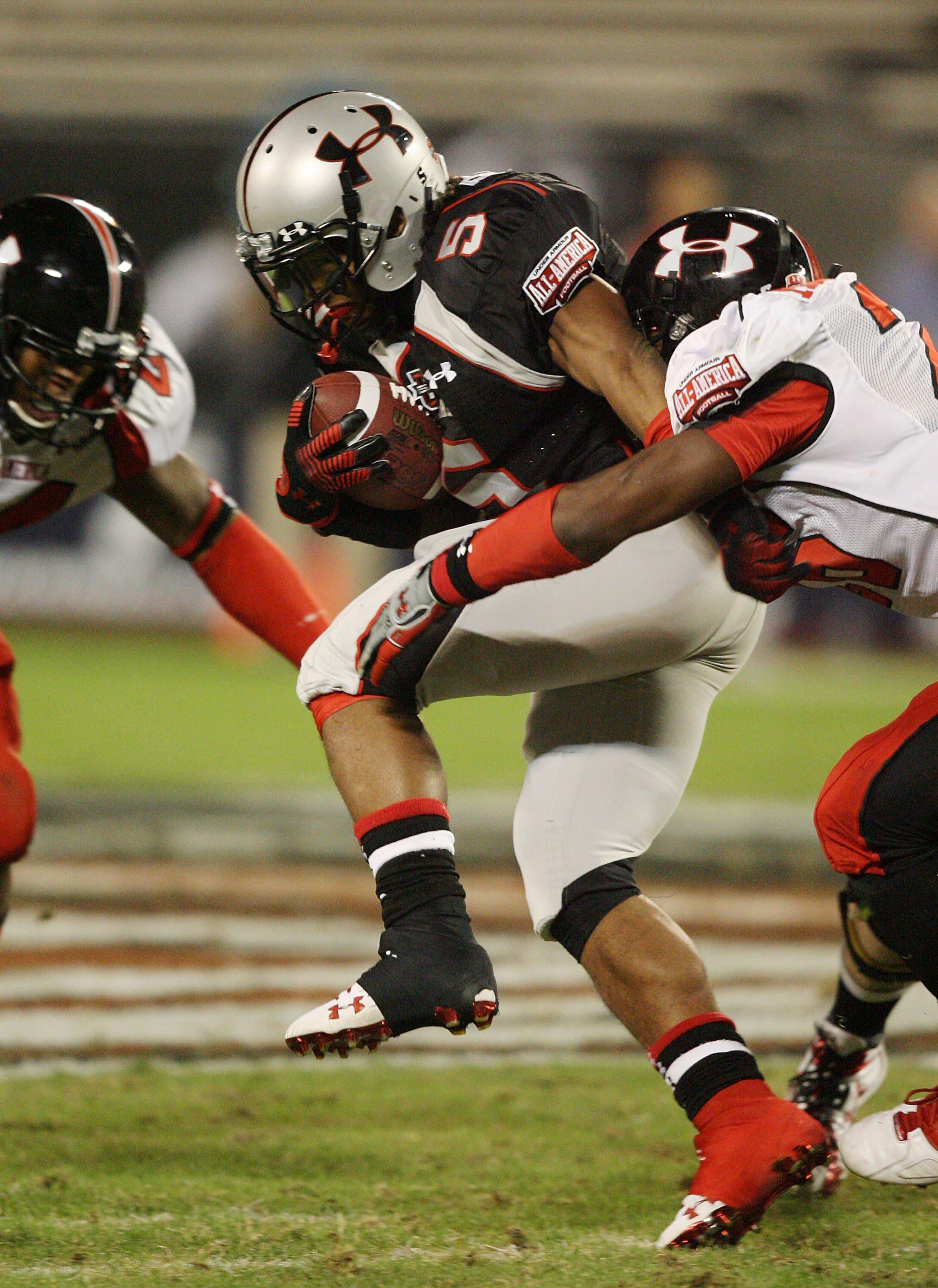A new study released today suggests that the concussion crisis unfolding on your TV every Sunday extends well beyond the bright lights of the NFL the whole way to your local high school field. The average prep football player, a panel of experts found, is nearly twice as likely as their college counterparts to suffer a concussion, troubling news for everyone from parents of young athletes to the big business that is the National Football League. Here’s ESPN with more from the report that was funded by the CDC with a contribution from the NFL:
A panel of medical experts convened by the National Academy of Sciences analyzed a series of academic studies, with the most recent showing that college football players suffer concussions at a rate of 6.3 concussions per 1,000 “athletic exposures”—each exposure representing a practice or game. For high school football players, the comparable figure is 11.2. …
At a news conference following the release of the report, panelists were at a loss to explain why the concussion rate for high school players was so much higher than for college players. One doctor speculated that high school athletes are more likely to report concussions because they are living at home with parents who are on alert, while another noted that developing brains are more vulnerable to harm and take longer to recover from a concussion.
The concussion rates in boys lacrosse (6.9) and girls soccer (6.7) also exceeded the rate found in college football, while the rate among high school wrestlers (6.2) was also noticeably high. Across all sports, concussion-related emergency room visits for people 18 and younger jumped from 150,000 in 2001 to 250,000 in 2009—a massive increase that may be explained, at least in part, by increased education on the topic.
As for the effects of concussions, the study “observed impairments in the areas of memory and processing speed,” and found that while most people were symptom-free after two weeks, in 10 percent to 20 percent of cases “symptoms persist for a number of weeks, months, or even years.” Perhaps even more troubling for athletes (and their parents), is the fact that the study concludes that there is “little evidence that current sports helmet designs reduce the risk of concussions.”
